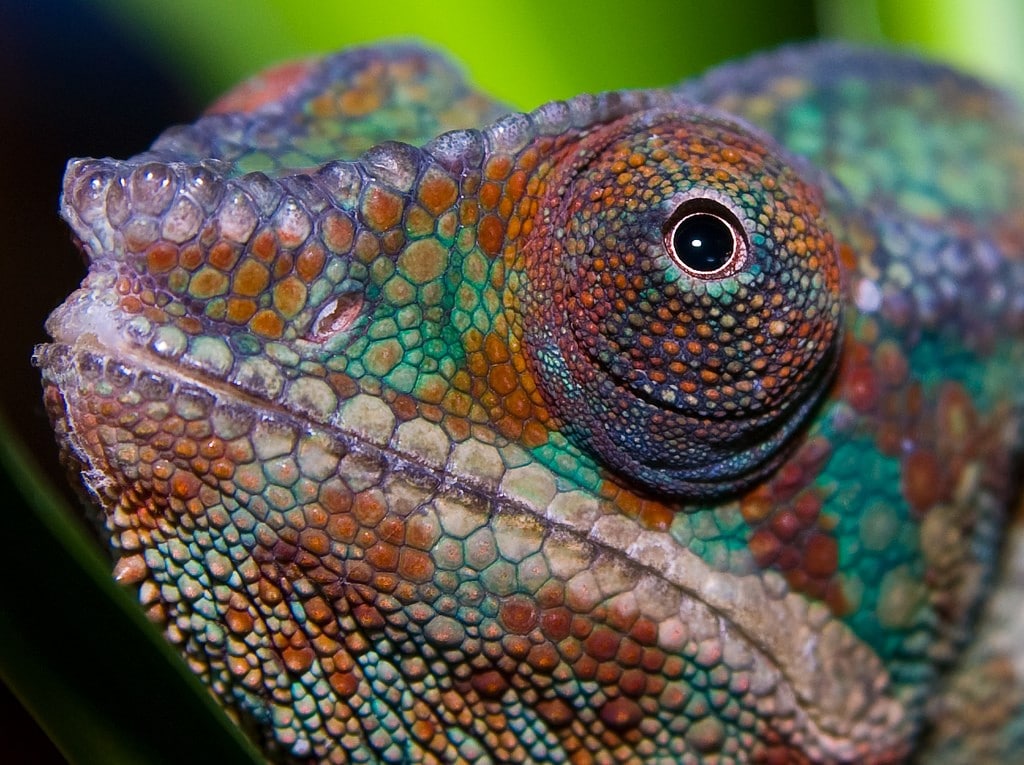Some years ago I did a survey of 200 clinicians working with chronic pain to extract the language that patients used to express pain, and the language that clinicians offered back. One example that has stuck with me and that I have used is ‘Be like a chameleon’. Most patients will look at you oddly and ponder what you last ingested but this is a beaut simile and really useful clinically.
Most people think that chameleons change based simply on their environment – a very clever camouflage to hide from predators. But new evidence has emerged suggesting that chameleons are wonderfully biopsychosocial – they change colour in response to physical, environmental and emotional needs.
Here’s the nugget:
‘A chameleon has great power – it explores and adapts to its surroundings. It changes colour as it moves in the world to suit the environment, and it also changes colour depending on its mood and emotions. We can be like chameleons – re-join your environment, move and explore your world, try out different environments, practice the power of adaptation. Remember, it’s not just about your physical environment, you can move and adapt through your social and emotional environment as well. This is a vital part of rehabilitation and treatment – it’s healthy for your body, your brain – healthy for all of you. Go on, be like a chameleon.’
We are in the midst of collecting more transformative metaphors for Lorimer’s and my new book Explain Pain Supercharged – if you’d like to share your transformative metaphors they might make it into the book (of course you’ll get full acknowledgement!). Share or comment below.
– David Butler
PS – A chameleon’s tongue can be more than twice the length of its body – check out the clip!
“Neuroscience nuggets”
Neuroscience nuggets are information nuggets – pieces of biological information based on statement or metaphor that can be used as educational analgesia, explicit education or part of overall story telling. We’ve got more than 100 for the forthcoming Explain Pain Supercharged!


Which immediately raises the important question (with apologies to Thomas Nagel): “What is it like to be a chameleon?”
Hi David,
Thanks for the nugget. I find many patient’s that I see view re-engaging in life as purely physical and often a daunting ordeal. I’m looking forward to using this nugget as a way to reframe it as more exploratory, playful and inclusive of all environments.
In this analogy, if chameleons adapt by changing their physical color, what do you encourage people with to pain adapt? It’s a question I’m betting I’ll encounter as I try using it in practice.
Looking forward to the new book!
David, what about factoring in the wonderful biopsychosocial clinician? Could a little bit of chameleon-like change also be appropriate in response to the physical, environmental and emotional needs of the patient?
Right on John! – if clinicians followed the lead of the chameleon we should be able to offer a more biopsychosocial approach, adapting where we can.
Actually biopsychosocial is such an unweildy and clumsy term – the chameleon approach may be better!
Cheers
David
David, as you may know, I am not a fan of “biopsychosocial”. It has become more of a shibboleth to which people only pay lip service. Some of us think that “sociopsychobiological” is a more useful approach, because it gives due recognition to the inescapable fact that clinicians cannot really influence what is happening at the biological level.
From my imperfect understanding of reptilian biology, the male chameleon has a limited but effective range of adaptive responses to its environment, and particularly so when it encounters a male rival. Its responses are then intersubjective.
So yes, we can learn something important from the behaviour of chameleons – the centrality of intersubjectivity when we as health professionals are attempting to engage with our fellow human beings who are experiencing pain. .
Lovely David,
I suppose it’s about understanding the difference between curing something and healing someone…….Curing a body part is very biomedical and leaves potential for recurrence or indeed outbreak in another body part…..healing is about tending to the whole person, leading to a deeper more wholesome fundamental and enduring change……This requires a chameleonistic approach….
DB
London 🌈🌈🌈
Mathew, it sounds to me like you are postulating the existence of a “little man” (i.e. homunculus) situated somewhere inside or outside the body who is responsible for directing operations of the patient’s brain. Have I properly understood your position?
Who (and where) is the conductor of this orchestra?
But who is this conductor?